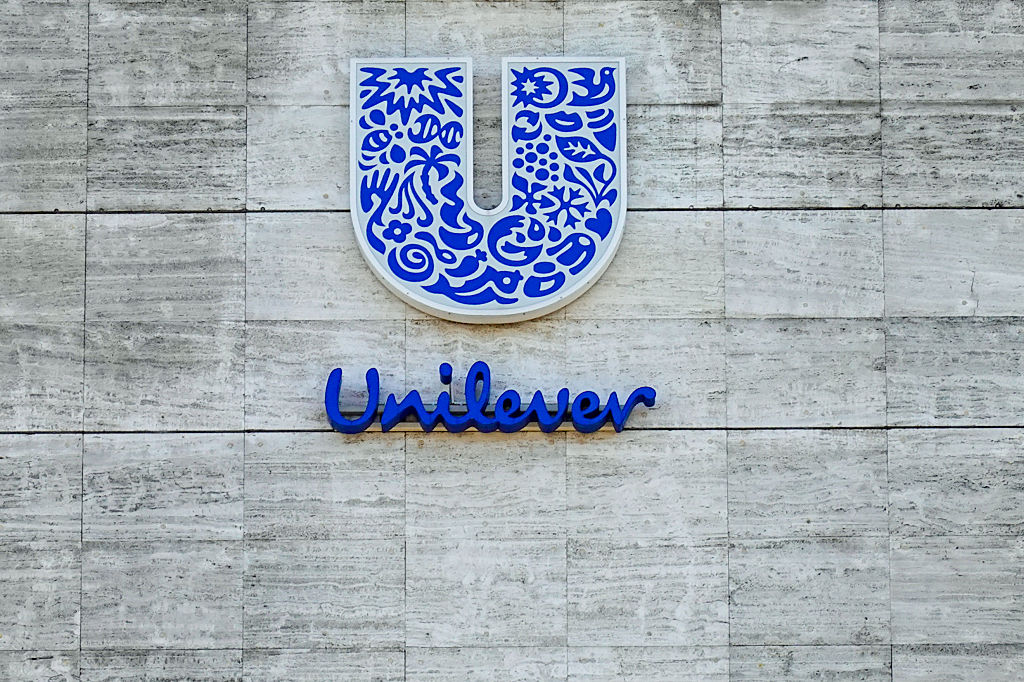How to invest in private equity
New forms of private equity funds give access to ordinary investors of more modest means. Should they rush in?


Sherman McCoy, the lead character in the 1987 book The Bonfire of the Vanities by Tom Wolfe, was described as a “master of the universe” due to his role as the highest-earning bond trader at his broker. In the 1980s, bond traders were the stars of Wall Street. Electronic trading was primitive and much trading depended on personal relationships as well as inside information. These inefficiencies allowed traders to extract super-normal profits across trades at a time when demand for credit was surging, driven by the growing mortgage debt and corporate bond markets, as well as the US government’s expanding fiscal deficit.
The growth of the credit markets also gave rise to the emergence of another sector: private equity. In the history of finance, the principle of the private company has been around far longer than stock markets and public companies. However, the world of private equity as we know it today really began to develop in the 1970s and 1980s, as financial markets matured and it became easier to assemble large sums of money to back deals.
The way the market developed through these formative decades illustrates how the industry operates. In the early days, private-equity companies were generally referred to as “leveraged buyout firms”. The label was appropriate. Most private-equity deals involve the buyer providing only a portion of the asking price with the remainder coming in the form of a loan from a single lender or a syndicate of banks. This loan is then refinanced with longer-term debt, secured by the assets of the acquired company and supported with its cash flow. The money on the equity side of the deal usually comes from funds managed by the buyout group.
MoneyWeek
Subscribe to MoneyWeek today and get your first six magazine issues absolutely FREE

Sign up to Money Morning
Don't miss the latest investment and personal finances news, market analysis, plus money-saving tips with our free twice-daily newsletter
Don't miss the latest investment and personal finances news, market analysis, plus money-saving tips with our free twice-daily newsletter
The private-equity and buyout industry experienced exponential growth throughout the 1980s, driven by the surge in demand for corporate and high-yield bonds, largely facilitated by the high-profile financier Michael Milken. According to the US National Bureau of Economic Research, in 1990, private equity was a little-known niche, with $6.7 billion in investments. Today, according to McKinsey & Company, that number is closer to $5 trillion globally, or $11 trillion including venture capital – although as most assets are held in opaque offshore company structures, it’s impossible to assess the full scale of the industry. Here, we’ll be focusing mainly on the business of private equity in relation to private companies rather than private credit or venture capital, both of which should be considered as entirely different asset classes. Over the past decade, private-equity managers have become the new “masters of the universe” as fees have swelled and the industry’s influence on the wider economy has grown.
Private equity is very private
Over 20 years, private equity has generated a net annualised return of almost 13%, according to MSCI Private Capital Solutions. Alternative data from Preqin suggests the annualised gains from private equity over the past 15 years were 14%. But getting to the bottom of these returns isn’t straightforward. The industry likes to use a metric called the internal rate of return (IRR), which takes into account the cost of the return, cash flows received over the life of the asset, and value realised at the point of sale, all compared with the risk-free rate, usually a US Treasury bond. But as Ludovic Phalippou, a private-equity guru and professor of financial economics at the University of Oxford’s Saïd Business School, explains on the FT Alphaville blog, the IRR is a complex formula that assumes every dollar distributed is reinvested at the same rate it was earned. That’s generally impossible as the rate of return is heavily dependent on returns achieved in the first few years after the initial investment. As Phalippou says, “The complex mathematics mean that early cash flows dominate the calculation, while later ones have almost no impact. You can invest for 40 years, make or lose billions – and your IRR since inception will still reflect that nice exit in 1980 or whenever.” This “IRR stickiness” is “fertile ground for gaming”. Even without this “gaming”, IRR tends to be inflated due to the “survivorship factor” as strong early investment exits tend to outweigh losses by a substantial margin.
Then there’s the issue of fees. Private equity has attracted attention for its high fees over the years, an issue industry insiders have batted away, highlighting the returns investors have been able to achieve. This argument has weight. Buying and operating private businesses does require a lot of extra work, so comparing the fees with, say, a low-cost tracker fund doesn’t make much sense. Neither are these fees particularly demanding. Private-equity funds that were raising money in 2024 had mean management fees of 1.74% for buyouts and 1.93% for growth equity, says Prequin. Data from Callan shows that “secondaries” (funds buying stakes in other funds) typically charge more than diversified funds of funds, with management fees averaging 1.07% during the investment period.
However, according to research from Oxford University and Frankfurt School of Finance & Management, private-equity firms charged $20 billion of “hidden fees” to the almost 600 companies they owned, with a total value of $1.1 trillion. So-called “monitoring fees” and “transaction fees” were agreed by private-equity firms and companies acquired. Further research from Phalippou reveals that private-equity firms earned more than $1 trillion in so-called carried interest (a share of the profit of each investment sold) since the turn of the century.
Getting to the bottom of the total fees charged by private-equity funds and the resulting impact on returns can be tricky, to say the least. Large institutional investors don’t tend to disclose this data and private-equity firms have a vested interest in not revealing more than they have to. Private equity is, by its very nature, very private. One of the most revealing and recent studies was published at the end of 2024 by Cliffwater, a leading provider of proprietary research on private investments. It found that private-equity allocations by state pensions produced an 11.0% annualised return net of fees over the 23-year period ending 30 June 2023, outperforming the US total market index by 3.8 percentage points per annum.
How private-equity funds work
It is tempting to make judgements based on such headline figures, but the reality on the ground is very different. There are more than 30 notable private-equity firms, including well known names such as Blackstone, Carlyle, CVC, KKR, Bain Capital, Warburg Pincus, Lone Star Funds, Fortress, Ares Management, HarbourVest and Cinven. These firms manage separate funds. KKR, for example, currently lists 25 active funds in its 2025 annual report, as well as other core investment vehicles. Of these, the firm had achieved $207 billion in commitments, of which it had invested $160 billion; it had realised $159 billion via sales or IPOs; and had $90 billion remaining and $55 billion uncalled capital (money investors have pledged but KKR has yet to find a home for). KKR calculates it is owed $6.3 billion in carried interest on these investments.
It’s worth briefly looking at how private-equity funds usually work. A management firm, in this case KKR, sets up a fund as the leading or general partner (GP). The GP controls investment and divestment decisions and collects fees. It also has unlimited liability if the investment goes wrong. The GP goes out to investors to raise capital in the form of capital commitments. These are commitments to give the fund capital when called for. The investors, or limited partners (LPs), can retain “uncalled” capital, but must be ready to hand it over when the GP finds an investment opportunity. Generally speaking, these funds have limited lifespans of about five years. That means GPs look to buy, improve and sell businesses within this time frame. Capital is returned at the end of the fund’s life.
Every fund has a different mandate, investors, time frame and fee structure. Fees between funds can vary by as much as 400%, from 0.5% to 2.5%, according to a paper by Juliane Begenau and Emil N. Siriwardane in the Journal of Finance in 2024 (the paper looked at cash flows in LP funds covering $438 billion of investments made by 218 US public pensions in 2,400 private-market funds). Larger investors that had worked with GPs in the past were often handed more lucrative deals at the expense of smaller investors.
Secondaries and continuations
So far, we have looked at “vanilla” private-equity funds – the ones taking companies private and into the world of private equity in the first place. As the industry and the demand for exposure to private funds has grown, companies such as KKR and Blackstone have developed different vehicles and strategies to expand their portfolios. One such is the secondaries market. This refers to the buying and selling of existing stakes in private-equity funds during a fund’s lifetime, which can be handy if an LP wants to unlock cash in a hurry. This market has doubled since 2018, with the number of deals hitting $162 billion in 2024. The market is projected to reach $300 billion by 2030. As secondaries are often conducted as a way to raise cash in a hurry, they can offer access to assets, whether whole portfolios or individual companies, at a significant discount.
LPs can sell their holdings to other parties and so can GPs. However, these sales often take the form of a continuation vehicle. This market is nowhere near as developed as the LP-led secondary market, but it’s growing rapidly. Transaction volumes in the second half of 2024 topped $47 billion, up 44% year on year, according to Jefferies (the figure was $41 billion in the first half of 2025). When a GP sells an asset to a continuation vehicle, it’s essentially selling to a new fund. LPs can either choose to exit the old fund or roll over into the new fund. It’s not uncommon for the new fund to have an entirely different group of investors to the old fund.
Earlier this year private-equity group TDR Capital (owner of Asda) sold its majority stake in gyms group David Lloyd Leisure from its fund TDR Capital III to a new vehicle TDR Capital Titan for £2 billion. As the Financial Times reported at the time, of this total £1.2 billion was debt and most of the remaining investment (£800 million) was new, suggesting “that few investors in the original TDR fund chose to roll over their investments into the new vehicle”. Other large deals this year include Vista’s $5.6 billion fund to sell a large existing stake in IT firm Cloud Software Group to a newer fund it manages, while Inflexion sold stakes in four deals, including industrial company Aspen Pumps and Rosemont Pharmaceuticals, a UK pharma business, for £2.3 billion.
Managers have argued these funds allow them to hold onto assets for longer. If they own a great business, they argue, they shouldn’t have to sell at the end of a fund’s life. That’s a good argument, but there’s also growing concern these managers can’t find anyone else to buy the assets at the right valuation. Traditionally, private-equity funds offloaded assets onto public markets or other private-equity investors for a handsome return. However, as private-equity valuations have skyrocketed (with more money chasing deals) and the IPO market has dried up, it’s become harder and harder to offload assets at the desired price. Setting up continuation vehicles is one way to save face.
Dramatic shift in the private-equity industry
Most of the structures outlined above are designed primarily for large institutional or ultra-high-net-worth investors – billionaires and their family offices. Until recently, private equity was mostly off limits for the average investor, with the exception of a handful of listed vehicles, predominantly investment trusts listed on the London Stock Exchange. However, in the past two or three years there’s been a dramatic shift in the industry with the development of so-called evergreen semi-liquid funds. Unlike the traditional private-equity fund model, where capital is committed and locked up for multiple years, semi-liquid funds are open-ended, meaning investors can subscribe and redeem at regular intervals at the prevailing net asset value (NAV) of the fund, which has no fixed life. Portfolio managers construct the portfolio in such a way that investors can withdraw cash when required. That’s not particularly easy with private assets that are designed to be held for five years or more, but as money is currently flowing in the right direction, the strategy has yet to be tested.
Still, investors are flocking to the opportunity. Private-equity giant Carlyle recently reported in its third-quarter earnings that it had raised $3 billion via evergreen vehicles between July and the end of September, ten times more than the same period in 2023 (inflows into its strategies totalled $16.9 billion overall). Blackstone, one of the world’s largest private-equity firms, reported a 167% rise in fee-related income in the second quarter, primarily due to income from its eight evergreen vehicles. Apollo recorded $9 billion of inflows into its high-net-worth-client arm in the first half of the year, and has recently laid out plans to launch three new vehicles in addition to its 18 other strategies. Blackstone and Blue Owl have even turned to television advertising to get investors to join up; in the US, Bank of America now lets its wealthy clients invest directly in the strategies. Across the UK and Europe (where roughly 40% of flows originate), more than €88 billion had been invested by June this year, more than double the amount in early 2024, according to Novantigo.
However, there are growing questions over the suitability of these funds. Some reports have suggested big private-equity investors are taking advantage of this flood of capital to cash out their holdings at higher prices. Deals have helped prop up values in the secondaries market, which is far more flexible than the primary market and perfectly suited to the semi-liquid nature of evergreen funds. What’s more, fund managers can mark up the value of secondary deals to their NAV value after the purchase. As most secondary deals are stuck at discounts to NAV (often deep discounts in distressed markets), this can generate vast, instant paper gains. That also means evergreen funds can pay more. According to survey data from advisory firm Campbell Lutyens, evergreen vehicles paid on average 4% more last year for fund stakes than traditional buyers.
The potential for conflicts are rife in this market and it’s important to note the strategies haven’t been tested in a down market. The private-equity industry has generated fantastic returns for investors over the past few decades, but past performance should not be used as a guide to future growth. The success of semi-liquid funds depends on the continued outperformance of the industry and continued support of investors.
A different approach
If investors want to add exposure to private equity to a portfolio, consider instead listed investment trusts, the likes of HarbourVest Global Private Equity (LSE: HVPE), ICG Enterprise Trust (LSE: ICGT), Pantheon International (LSE: PIN), HgCapital Trust (LSE: HGT) and Oakley Capital Investments (LSE: OCI). Each of these trusts has its own approach, some of which have been more profitable than others over the past decade. HG Capital has the best record. Over the past decade it has returned 458% for investors, excluding dividends, and the shares are currently trading at an 11% discount to NAV. The trust leans on the expertise of its parent, HG Capital Europe’s largest private-equity software investor. The fund is currently invested in more than 55 small firms in areas such as business-to-business software, tech-enabled services and data providers, says Luke Finch of HG. “These are the kind of software companies that help SMEs and businesses run their operations. So it might be filing your accounts, paying your people… compliance, things like that.”
By sticking with these companies, HG is focusing on a market niche where there’s a strong prospective sales pipeline at the end of its ownership period. “On average, over the last three or four years, we’ve typically had realisation activity, either full sales, part sales, maybe refinancings, on about a third of our portfolio each year,” says Finch, and the average uplift on NAV for each business at the time of sale has been 20%. “What’s a business worth? It’s ultimately worth what someone’s willing to pay you for it. And that’s the acid test at the end of it.” Finch continues, “We take quite a conservative view on valuations within HG… Ultimately, we don’t get paid until we sell businesses. So carrying them at the wrong value isn’t helpful to anybody.” This approach isn’t unique to HG. Still, it’s a valuable insight into how the trust and wider industry should work and operate. If investors want to buy what private equity is selling, they should ensure they understand how the sector works, where any potential conflicts lie, and find a manager who’s transparent.
This article was first published in MoneyWeek's magazine. Enjoy exclusive early access to news, opinion and analysis from our team of financial experts with a MoneyWeek subscription.
Get the latest financial news, insights and expert analysis from our award-winning MoneyWeek team, to help you understand what really matters when it comes to your finances.

Rupert is the former deputy digital editor of MoneyWeek. He's an active investor and has always been fascinated by the world of business and investing. His style has been heavily influenced by US investors Warren Buffett and Philip Carret. He is always looking for high-quality growth opportunities trading at a reasonable price, preferring cash generative businesses with strong balance sheets over blue-sky growth stocks.
Rupert has written for many UK and international publications including the Motley Fool, Gurufocus and ValueWalk, aimed at a range of readers; from the first timers to experienced high-net-worth individuals. Rupert has also founded and managed several businesses, including the New York-based hedge fund newsletter, Hidden Value Stocks. He has written over 20 ebooks and appeared as an expert commentator on the BBC World Service.
-
 Goodwin: A superlative British manufacturer to buy now
Goodwin: A superlative British manufacturer to buy nowVeteran engineering group Goodwin has created a new profit engine. But following its tremendous run, can investors still afford the shares?
-
 Is US stock market exceptionalism over?
Is US stock market exceptionalism over?US stocks trailed the rest of the world in 2025. Is this a sign that a long-overdue shift is underway?
-
 Goodwin: A superlative British manufacturer to buy now
Goodwin: A superlative British manufacturer to buy nowVeteran engineering group Goodwin has created a new profit engine. But following its tremendous run, can investors still afford the shares?
-
 A change in leadership: Is US stock market exceptionalism over?
A change in leadership: Is US stock market exceptionalism over?US stocks trailed the rest of the world in 2025. Is this a sign that a long-overdue shift is underway?
-
 A reckoning is coming for unnecessary investment trusts
A reckoning is coming for unnecessary investment trustsInvestment trusts that don’t use their structural advantages will find it increasingly hard to survive, says Rupert Hargreaves
-
 Metals and AI power emerging markets
Metals and AI power emerging marketsThis year’s big emerging market winners have tended to offer exposure to one of 2025’s two winning trends – AI-focused tech and the global metals rally
-
 8 of the best houses for sale with beautiful fireplaces
8 of the best houses for sale with beautiful fireplacesThe best houses for sale with beautiful fireplaces – from a 15th-century cottage in Kent to a 17th-century palazzo in Oxfordshire
-
 King Copper’s reign will continue – here's why
King Copper’s reign will continue – here's whyFor all the talk of copper shortage, the metal is actually in surplus globally this year and should be next year, too
-
 Luana Lopes Lara: The ballerina who made a billion from prediction markets
Luana Lopes Lara: The ballerina who made a billion from prediction marketsLuana Lopes Lara trained at the Bolshoi, but hung up her ballet shoes when she had the idea of setting up a business in the prediction markets. That paid off
-
 British blue chips offer investors reliable income and growth
British blue chips offer investors reliable income and growthOpinion Ben Russon, portfolio manager and co-head UK equities, ClearBridge Investments, highlights three British blue chips where he'd put his money